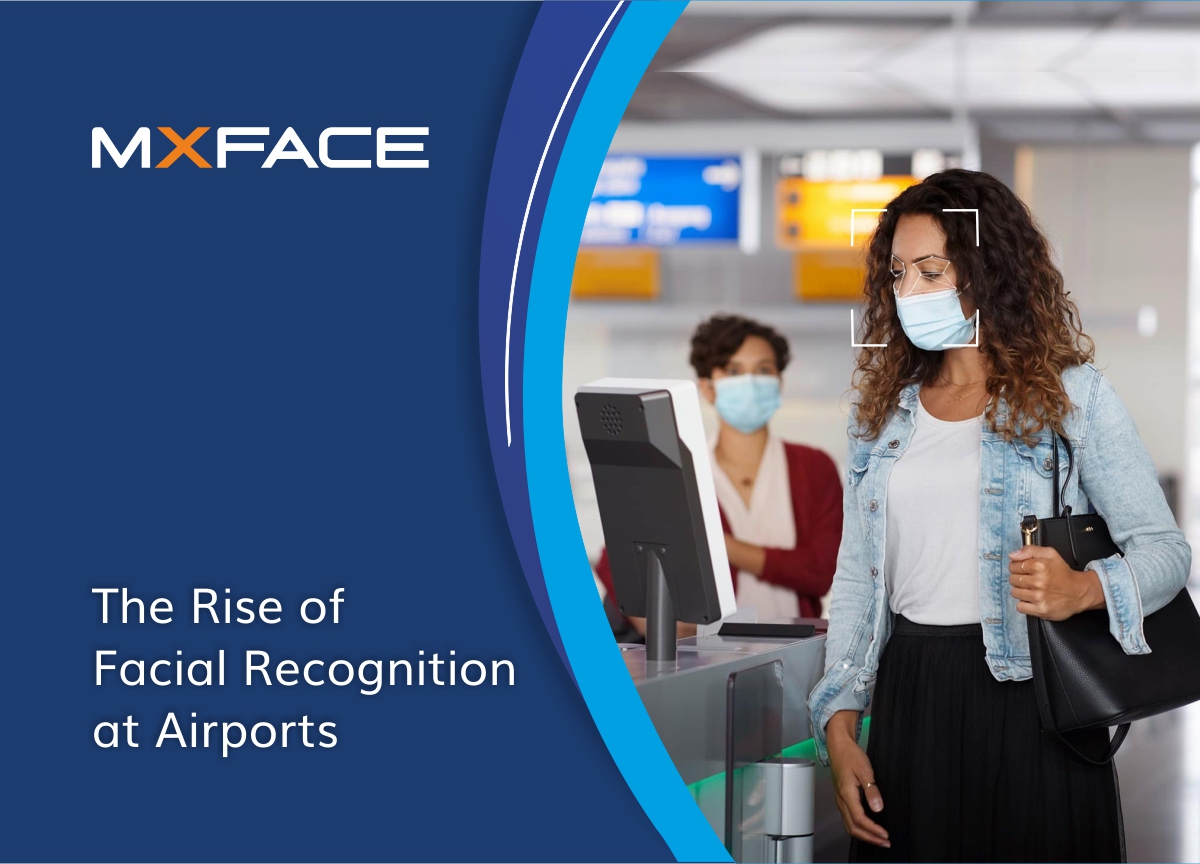How does facial recognition technology Help At Airports?

A dramatic increase in airport security threats has given rise to the challenges of the airport authority to beef up their defences while ensuring a high level of traveller confidence. It is crucial to verify traveller identity at multiple points throughout the journey to meet the security requirements. Facial recognition technology, which identifies and verifies a person using his facial feature, is one of the most effective ways to provide a very high security and excellent air travel experience to the passengers.
How does facial recognition work?
A facial recognition system uses computer algorithms to pick out the unique facial features, convert them into a mathematical representation, and compare the information with a database of known faces to find a match. This technology comes with a plethora of benefits which include high accuracy and fast identity verification. The demand for this contactless technology is fueling in the covid era as it mitigates the chances of virus transmission.
Many airports worldwide deploy facial recognition security systems to speed up identity verification and create a secure and seamless travel experience. The five most common airport areas that use facial recognition technology to make air travel safer and easier are listed below.
Check-in
The popularity of kiosks integrated with facial recognition is increasing for check-in and drop-off luggage in air travel. Kiosk simplifies the check-in process by enabling passengers to complete most procedures on their own. It means that the scan of a passenger's face is used as their sole form of identification in check-in kiosks and bag drop.
Boarding
The use of facial recognition technology is already helping to streamline the boarding process. It replaces manual processes at many places, which could take longer and cause you to miss your flight. The introduction of this cutting-edge technology at airports allows the passengers to access and proceed through subsequent boarding procedures.
Wayfinding
Finding flight information can become a daunting task that eventually becomes frustrating when a passenger is tired. The use of a facial recognition system could help passengers with navigation-related issues. This technology could share information about a traveller's identity, eliminating the source of confusion and stress.
Custom and Immigration
Custom and immigration authorities adopt a facial recognition system to compare facial scans at the airport with passengers' passport or visa photos on record.
Intelligent Surveillance Analytics
With the help of facial recognition technology, the security of airports can be reinforced. It can help the airport's authority identify threat patterns so that their workforce is ready for uncertainty. It does that by detecting passengers and their faces and alarming airport authorities if there is a case of human intrusion into a restricted area.
Endnote
Facial recognition technology is taking over airports across the globe. This technology is effective in accelerating various processes and eliminating airport security threats. It is safe to say that this advanced technology will become more prevalent in the travel sector in the wake of the corona pandemic as touchless interactions gain popularity.
At Mxface, we offer an API platform that powers face recognition applications for serving various use cases. The API can be implemented as a functionally independent application or seamlessly integrated into new or existing biometric security solutions by system integrators and solution providers.


Comments